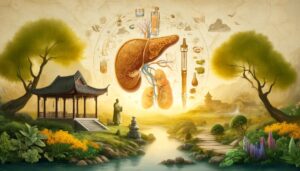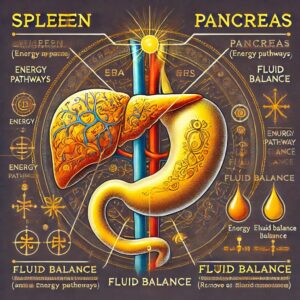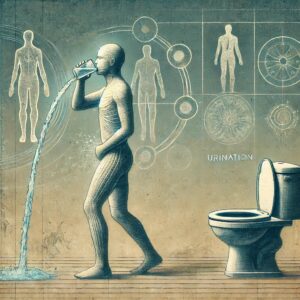Through the Lens of TCM: Understanding Diabetes
In the realm of Traditional Chinese Medicine (TCM), the intricate web of the body’s internal functions and the balance of energies is crucial for maintaining health and understanding diabetes. TCM offers a unique perspective, particularly focusing on the concepts of dampness and the spleen. Drawing insights from “The Spark In the Machine,” we can explore how these elements contribute to the manifestation and symptoms of diabetes.

Diabetes TCM
Dampness in TCM
This is a unique view that TCM offers about diabetes. Dampness is a pathological condition in TCM that can be likened to excess moisture within the body. It is heavy, sluggish, and can obstruct the flow of Qi (energy) and blood. Dampness often arises from dietary factors, environmental influences, or internal imbalances, leading to a range of symptoms such as lethargy, bloating, and a feeling of heaviness.

Diabetes TCM
The Spleen’s Role
Certainly in TCM, the spleen is a vital organ responsible for transforming food into Qi and blood, which nourish the body. It plays a pivotal role in digestion and the regulation of body fluids. The spleen dislikes dampness and is particularly susceptible to its effects. When the spleen is weak or overburdened, it can lead to the accumulation of dampness, impairing its function and disrupting the body’s balance.
Diabetes and Dampness
From a TCM perspective, diabetes is often associated with an underlying condition of dampness and spleen deficiency. The continuous intake of rich, sweet, and greasy foods, combined with a sedentary lifestyle, can overwhelm the spleen, leading to the accumulation of dampness. This excess dampness can manifest as the sticky, sweet urine characteristic of diabetes.

Diabetes Thirst
Constant Thirst and Urination
Another key point about diabetes is that the classic symptoms of diabetes—constant thirst and frequent urination—can be understood through the lens of TCM. The body’s attempt to expel excess glucose through urine leads to the loss of vital fluids, creating a cycle of dehydration and the need for more fluid intake. In TCM, this is seen as a result of the imbalance caused by dampness and spleen deficiency.
Thirst: The body’s effort to flush out excess glucose through urine leads to significant fluid loss, triggering thirst as a natural response to dehydration. In TCM, this is viewed as the body’s attempt to balance the excess heat generated by dampness.
Urination: The frequent need to urinate is the body’s mechanism to expel dampness and excess glucose. However, this process also depletes the body’s Yin (fluids), further aggravating the imbalance and leading to persistent symptoms.
Balancing the Body
Addressing diabetes in TCM involves strengthening the spleen, expelling dampness, and restoring the balance of fluids. Dietary modifications, herbal prescriptions, and acupuncture can help to support the spleen’s function, improve digestion, and regulate body fluids.
Qigong: Daily easy to do exercises can help increase microcirculation to the kidneys, liver, and cardiovascular system. Learn more in Dr. Cynthia’s book “Your Qi Matters,” attend her weekly Friday zoom classes, and sign up for the Qigong retreat October 4-6, 2024!
Dietary Recommendations: Eat foods that are easy to digest and avoid those that contribute to dampness, such as dairy, sugary foods, and greasy items. Incorporate spleen-strengthening foods like warm, cooked meals, and avoid raw or cold foods.
Herbal Medicine: Specific TCM formulas can help to tonify the spleen and resolve dampness. There are many different causes of diabetes, and it’s important to act upon the right diagnosis. Ask your acupuncturist / herbalist (me!) how TCM can help you prevent or reverse Type II diabetes.
Acupuncture: Targeted acupuncture points can stimulate the spleen’s function, improve digestion, and help to expel dampness from the body. These points are located along the organ’s facial planes, and help to improve blood flow and neurochemical communication between them.



